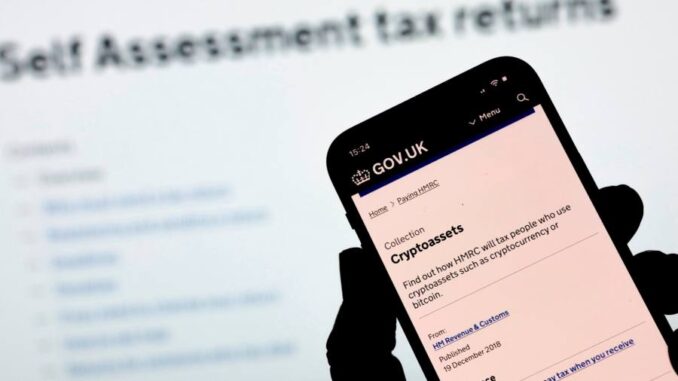
Britons will be nudged to declare any gains from crypto assets after the government announced it would amend tax forms, ahead of measures to slash the capital gains tax-free allowance.
The Treasury confirmed on Wednesday that from 2024-25, self-assessment tax return forms will feature a standalone section for individuals and trusts which had disposed of crypto assets. At present, the sale of cryptocurrencies is reported alongside a range of “other” assets and reliefs.
The proposals are forecast to raise about £30mn for the exchequer between 2025-28 owing to an “anticipated increase in declared CGT liabilities”, according to the Office for Budget Responsibility. The timing of changes will also coincide with a sizeable cut in the capital gains allowance to £3,000 for individuals and £1,500 for most trustees by 2024-25.
“Changes will make it harder for investors to overlook reporting requirements and enable tax officials to cross reference customer details with other information they receive,” said Dion Seymour, crypto and digital assets technical director at the tax consultancy Andersen LLP, and former HM Revenue & Customs policy lead on crypto assets.
Measures are aimed at simplifying tax forms to encourage tax compliance, as ministers ramp up efforts to transform the UK into a global crypto hub through a set of planned reforms.
In February, the Treasury announced plans for new rules governing the issuance, lending and trading of crypto tokens in an effort to improve transparency over transactions and customer safeguarding measures amid market volatility which had led several lenders and exchanges to fall into difficulties.
In a research paper published last July, HMRC found that around 8 per cent of the UK adult population owned crypto assets. Less than half of this group had sold crypto assets, with around 8 per cent of those who had disposed of a digital asset crystallising profits in excess of the current £12,300 CGT allowance.
Christopher Thorpe, technical officer at the Chartered Institute of Taxation, a professional body, previously said the government should “absolutely” be upgrading filing forms with a separate box for crypto, as well as providing revised guidance on the application of tax rules on digital assets.
It is estimated that $8.16bn in cryptocurrency profits were realised in the UK in 2021, according to blockchain research group Chainanalysis. This was second only to the US and signalled the extent of crypto gains realised by investors, which were unlikely to be fully disclosed.
A third of those holding crypto reported having a good understanding of capital gains requirements, according to HMRC. Some 37 per cent of people said they knew “little”, while more than one in five were “not familiar at all”.
“Separating out crypto assets on the capital gains pages of self-assessment forms from 2024-25 seems like a smart move and one that will hopefully help HMRC better understand crypto receipts . . . and help to avoid unnecessary taxpayer confusion,” said Mike Hodges, partner at the accountancy firm Saffery Champness.
More people exchanging crypto for fiat currency are now likely to be realising taxable returns following the chancellor’s decision in November to cut the capital gains tax-free allowance from £12,300 to £6,000 in the 2023-24 financial year, and halve it again from April 2024.
“Tax rules for crypto assets are still confusing and continue to fall behind innovation in the sector,” said Marcus Foster, head of crypto policy at the lobby group Coadec. “HMRC must ensure that these rules reflect how the technology actually works — which is currently not the case.”






Be the first to comment